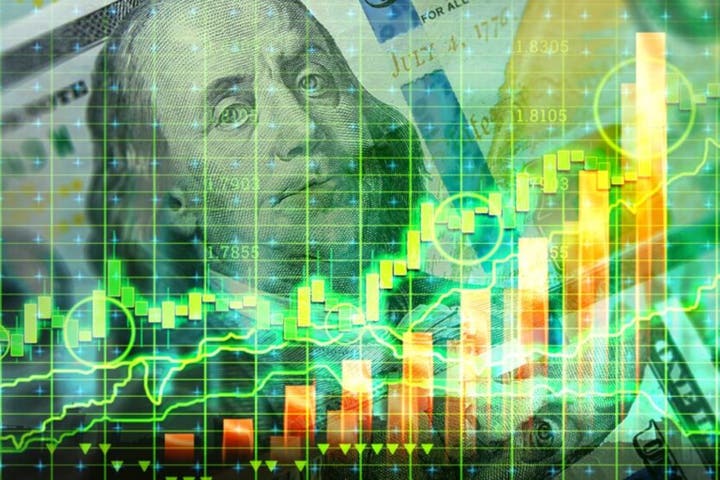
Howard Marks, chairman of Oaktree Capital, doesn't mince words. Price is what you pay, and value is what you get. But what is "value" in the eyes of this billionaire investor, famous for outstanding bets on distressed capital?
In his latest memo, "The Calculus of Value", he strips it down. A company's value comes from fundamentals – earnings today, earnings tomorrow, balance sheet strength, and the potential to create more. Earning power is the key angle for Marks.
Yet, management is what matters. With the right team in charge, a pile of assets becomes much greater than its parts. He calls this synergy – the alchemy that makes a good business more than just assets. Without it, fundamentals stay flat, and with it, they bend the curve.
Beyond the hype or narrative, the foundation of value is the ability to generate real cash flow under quality management. Everything else is noise.
Price Is A Consensus
Value may be fundamental, but price? That's a vote. And the market is nothing but a messy election every single day. Optimists and pessimists throw punches, and whatever number flashes on your screen is just the current consensus that should not throw us off the long-term plan.
Marks leans on Benjamin Graham's timeless metaphor: in the short run, the market is a voting machine; in the long run, it's a weighing machine. Psychology rules the near-term, but fundamentals win eventually. The problem is the "eventually" part. John Maynard Keynes had it right. Markets can remain irrational longer than you can stay solvent.
This is why price doesn't just bounce around value; it can run away past it, escalating into euphoric bubbles or crashing through it in panics. Investors who assume the market is always efficient overlook this human aspect. Marks' view is clear- price is consensus, shaped by emotion, momentum, and fear of missing out. Value is gravity.
And while gravity always wins, it doesn't tell you when.
Market Conditions And Warning Signs
In 2025, the market view is straightforward – fundamentals are worse, valuations are higher.
The S&P 500's forward P/E? Around 23 earlier this year — historically linked with limp 10-year returns in the 0–2% range. The Buffett indicator — total market cap to GDP — just hit an all-time high. Marks quotes the data from the Financial Times, saying that stocks now trade at 3.3 times sales, another record. Barclays' "equity euphoria indicator" has doubled its normal level, screaming bubble-like sentiment.
Meanwhile, the equity risk premium — the gap between what you earn on stocks versus the 10-year Treasury — has narrowed to the point where equities look expensive relative to bonds. That's a flashing red signal.
Market breadth is abysmal. 58% of the S&P's two-year total return comes from just seven names — the so-called "Magnificent Seven." Apple (NYSE:AAPL), Microsoft (NASDAQ:MSFT), Alphabet (NASDAQ:GOOG), Amazon (NASDAQ:AMZN), Meta (NASDAQ:META), NVIDIA (NASDAQ:NVDA), and Tesla now make up a third of the entire index.
Sure, these are world-class companies, but even Marks points out that the other 493 stocks still carry P/E ratios above historical norms. This isn't just a tech story; it's a market-wide inflation of prices.
So why are investors still partying? Marks gives us the unvarnished answer: optimism dies hard. Investors interpret bad news as "less bad," rationalize tariffs with acronyms like "TACO" (Trump Always Chickens Out), and cling to narratives like AI being the new gold rush. After 16 years without a prolonged bear market, FOMO is beating fear hands down.
From Elevated To Worrisome
Reflecting on thoughts from seven months ago, Marks believes fundamentals now look worse while prices have only marched higher. The gap between weaker earnings power and higher valuations has pushed the market from "elevated" to "worrisome."
Here's the problem: you can never prove overvaluation in real time. No bell rings at the top. Markets can keep stretching further than logic suggests. But Marks isn't in the business of waiting for bells. He thinks in terms of defense readiness, or what he calls Investment Readiness Conditions (INVESTCONs).
At INVESTCON 6, you're still buying. At 5, you reduce aggressive bets and tilt toward safer plays. By 1, you're shorting the market like it's the end of the world. Marks says we're now at a 5: time to lighten up on frothy equities, rotate into more defensive positions.
Value may be invisible in the current fog of market euphoria, but it hasn't disappeared. And when the consensus swings, those who respected gravity will still be standing.
Read More:
Photo: Shutterstock







